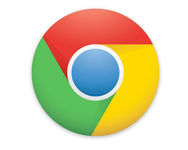Via TomsGuide
-----
Microsoft announced that it will be launching silent updates for IE9 in January.
 Despite
the controversy of user control, Microsoft especially has a reason to
make this move to react to browser "update fatigue" that has resulted in
virtually "stale" IE users who won't upgrade their browsers unless they
upgrade their operating system as well.
Despite
the controversy of user control, Microsoft especially has a reason to
make this move to react to browser "update fatigue" that has resulted in
virtually "stale" IE users who won't upgrade their browsers unless they
upgrade their operating system as well.
The most recent upgrade of Google's Chrome browser
shows just how well the silent update feature works. Within five days
of introduction, Chrome 15 market share fell from 24.06 percent to just
6.38 percent, while the share of Chrome 16 climbed from 0.35 percent to
19.81 percent, according to StatCounter.
Within five days, Google moved about 75 percent of its user base - more
than 150 million users - from one browser to another. Within three
days, Chrome 16 market share surpassed the market share of IE9
(currently at about 10.52 percent for this month), in four days it
surpassed Firefox 8 (currently at about 15.60 percent) and will be
passing IE8 today, StatCounter data indicates.
What makes this data so important is the fact that Google is
dominating HTML5 capability across all operating system platforms and
not just Windows 7, where IE9 has a slight advantage, according to
Microsoft (StatCounter does not break out data for browser share on
individual operating systems). IE9 was introduced on March 14 of 2011,
has captured only 10.52 percent market share and has followed a similar
slow upgrade pattern as its predecessors. For example, IE, which was
introduced in March 2009, reached its market share peak in the month IE9
was introduced - at 30.24 percent. Since then, the browser has declined
to only 22.17 percent and 57.52 percent of the IE user base still uses
IE8 today.
With the silent updates becoming available for IE8 and IE9,
Microsoft is likely to avoid another IE6 disaster with IE8. Even more
important for Microsoft is that those users who update to IE9 may be
less likely to switch to Chrome.
 Despite
the controversy of user control, Microsoft especially has a reason to
make this move to react to browser "update fatigue" that has resulted in
virtually "stale" IE users who won't upgrade their browsers unless they
upgrade their operating system as well.
Despite
the controversy of user control, Microsoft especially has a reason to
make this move to react to browser "update fatigue" that has resulted in
virtually "stale" IE users who won't upgrade their browsers unless they
upgrade their operating system as well. 